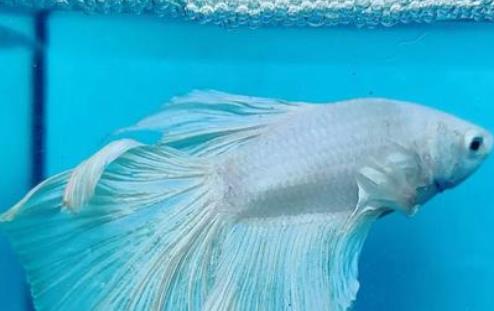Betta fish (Siamese fighting fish) are beautiful, relatively easy-to-care-for ornamental fish, but raising them successfully requires an understanding of their unique needs. Below is a detailed guide on how to care for betta fish:

1. Water Quality Requirements
Bettas have specific water quality needs, and clean, suitable water is the foundation of their health:
Water Temperature: The optimal range is 24–28°C (75–82°F). Chinese bettas (Parachela oxygastroides) can tolerate temperatures as low as 3°C (37°F), but sudden temperature fluctuations should not exceed 5°C (9°F) day and night.
pH Level: Slightly acidic to neutral water with a pH of 6.5–7.2 is ideal.
Dissolved Oxygen: Maintain levels above 5 mg/L to ensure proper respiration.
Tap Water Treatment: Let tap water sit for 2–3 days to allow chlorine to evaporate, or use a water conditioner to neutralize harmful chemicals immediately.
Water Change Frequency: Replace 1/3 to 1/2 of the tank water weekly. Ensure the temperature of the new water matches the existing tank water to avoid shocking the fish.
2. Tank Setup & Environment
Create a comfortable living space for your betta with these setup tips:
Tank Size: Each adult betta needs at least 5 liters (1.3 gallons) of water. A square tank measuring 20–30 cm (8–12 inches) in length/width is recommended (avoid tall, narrow tanks, as bettas need horizontal swimming space).
Solitary Housing: Bettas are highly territorial and aggressive toward other bettas—keep them alone to prevent fights that can cause injury or death.
Tank Decorations:
Use dark-colored substrate at the bottom to make your betta’s vibrant colors stand out.
Add live or silk plants (e.g., Java moss, Anubias) and smooth rocks to provide hiding spots—this helps reduce stress.
Indian almond leaves can be added to soften the water and create a more natural environment (beneficial for betta health).
Lighting: Provide 8 hours of gentle, indirect light daily. Avoid direct sunlight, as it can cause algae blooms and rapid temperature spikes.
3. Feeding Guidelines
Proper feeding is crucial to prevent overeating and health issues:
Juvenile Bettas (Fry): Feed 2–3 times a day in small portions. Suitable foods include microworms, baby brine shrimp, or specialized fry food.
Adult Bettas: Feed 1–2 times a day, giving only as much as they can eat within 5 minutes (any uneaten food will rot and pollute the water).
Food Options:
Live/Frozen Food: Brine shrimp, daphnia, and bloodworms (thaw frozen food first; rinse live food to remove contaminants).
Pellets/Flakes: High-quality, betta-specific food (look for formulas with high protein content, as bettas are carnivores).
Portion Reference: Juveniles typically eat about 10 small pellets per day; adults eat around 20 pellets per day (adjust based on pellet size and your betta’s appetite).
4. Disease Prevention & Treatment
Bettas are prone to certain diseases—early detection and treatment are key:
4.1 Ich (White Spot Disease)
Symptoms: Small white spots (resembling grains of salt) on the body, fins, and gills; fish may rub against decorations to relieve itching.
Treatment: Raise the water temperature to 28–30°C (82–86°F) to slow parasite growth, add aquarium salt (follow dosage instructions), or use an ich-specific medication (e.g., malachite green).
4.2 Fin Rot/Water Mold
Symptoms: Fins appear ragged, discolored (gray/brown edges), or covered in white, cotton-like growth; fish may become lethargic.
Treatment: Increase the temperature to 30°C (86°F), perform frequent partial water changes, and use medications containing methylene blue or antifungal agents.
4.3 Enteritis (Gastrointestinal Disease)
Symptoms: Loss of appetite, swollen abdomen, and white/stringy feces (signs of bacterial or parasitic infection, often from overfeeding or spoiled food).
Treatment: Stop feeding for 2–3 days to let the digestive system rest, raise the temperature slightly, and add antibiotics like oxytetracycline or furazolidone (follow product guidelines).
4.4 Prevention Tips
Keep the tank clean and stick to a regular water change schedule.
Avoid sudden temperature or pH changes.
Quarantine new fish in a separate tank for 2–3 weeks before adding them to the main tank to prevent disease spread.
5. Special Notes
Tank Lid: Bettas are active jumpers—always use a securely fitting lid to prevent them from leaping out of the tank.
Breeding: For breeding, provide a calm, still water environment. Male bettas build bubble nests at the water’s surface; after spawning, remove both parents to protect the eggs (males may eat the eggs, and females risk injury from males).
Tank Mates: Avoid housing bettas with other bettas or aggressive fish (e.g., cichlids). Peaceful, non-fin-nipping species (e.g., neon tetras, Corydoras catfish) can be considered for larger tanks (10+ gallons), but monitor interactions closely.
By following this comprehensive care guide, you can provide your betta fish with a healthy, stress-free environment where they thrive. Remember, observation is key to successful betta keeping—check your fish daily for changes in behavior, appetite, or appearance, and adjust your care routine promptly if issues arise.
